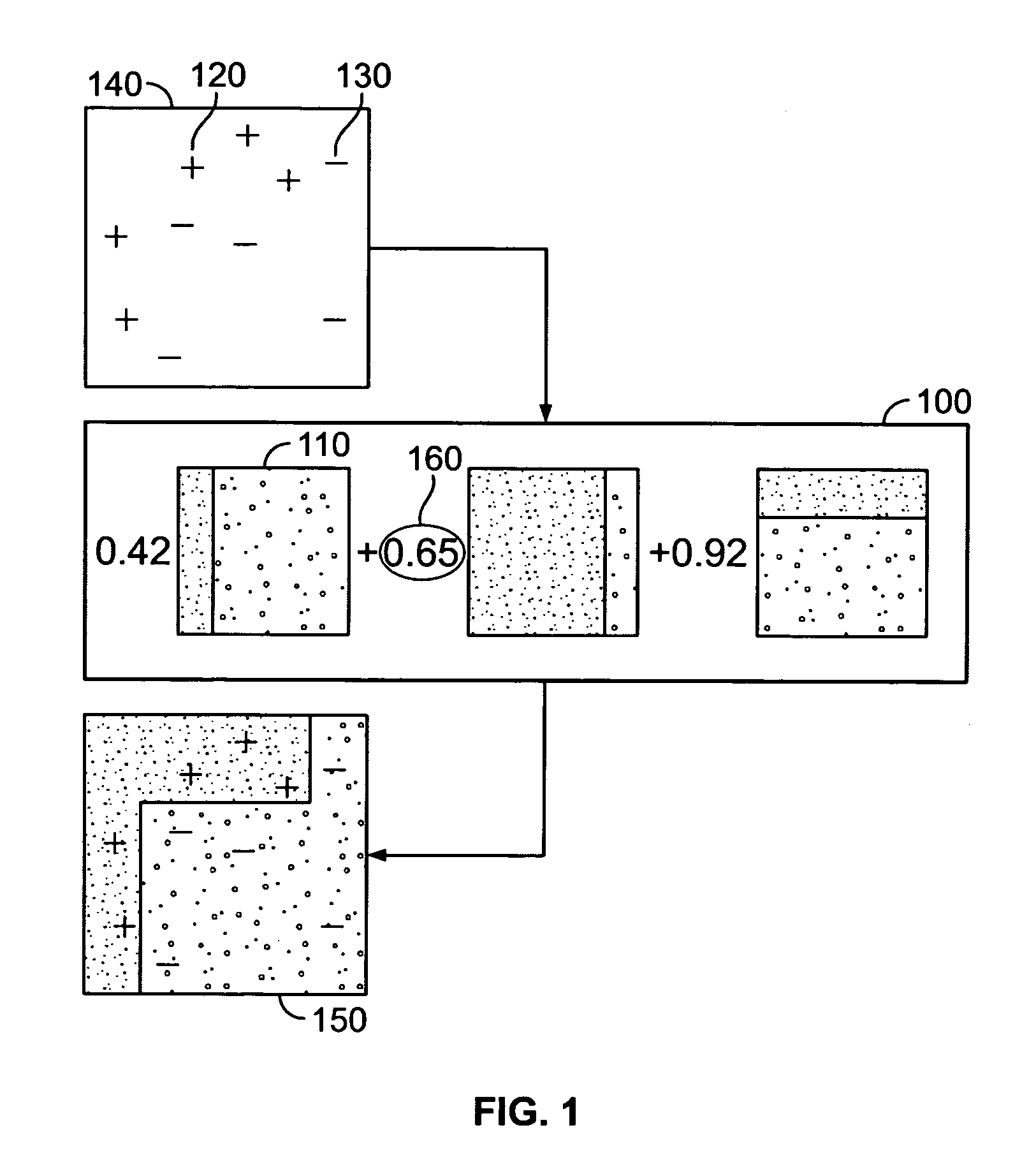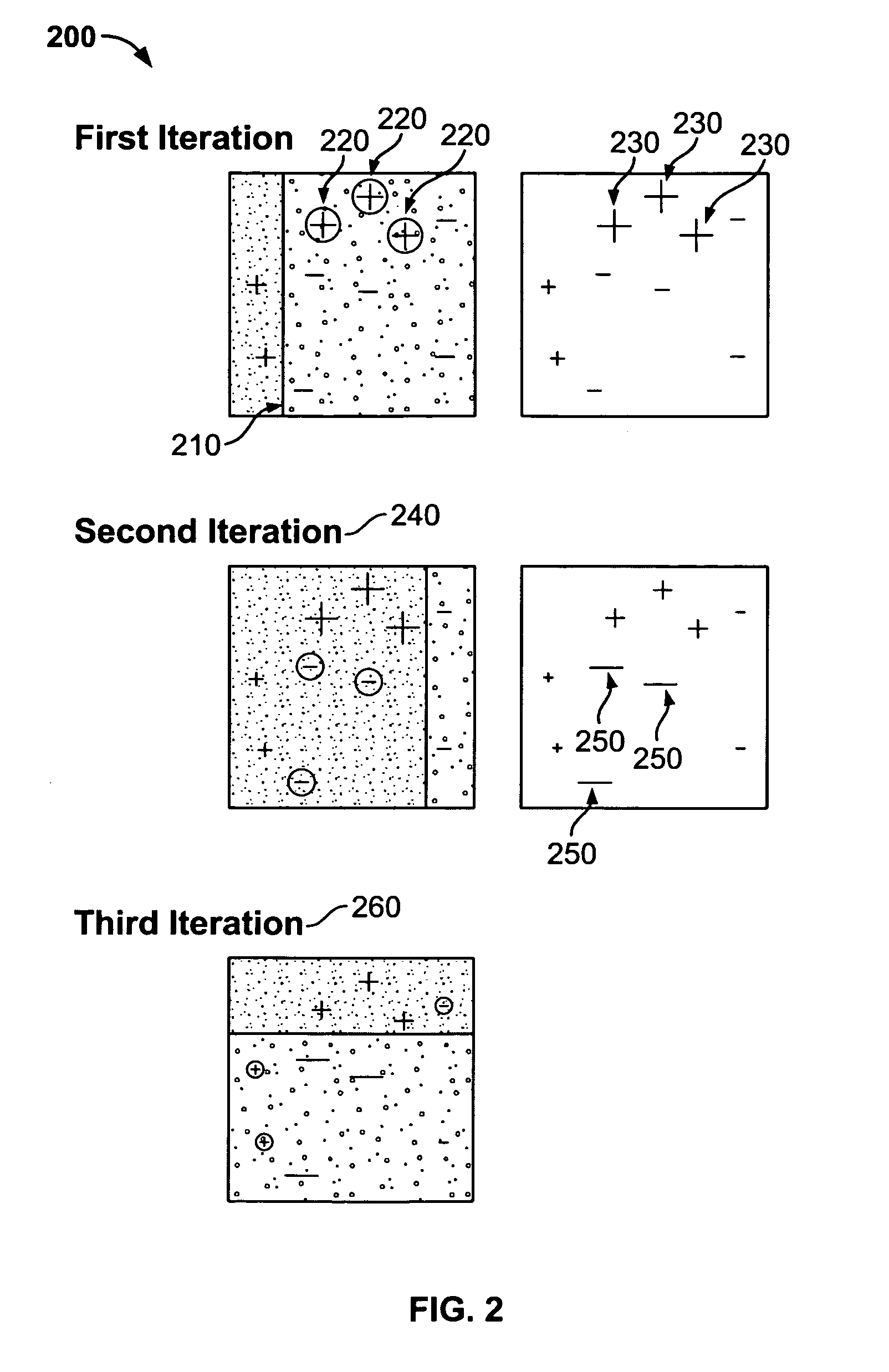Accelerating the boosting approach to training classifiers
a technology of boosting and classifiers, applied in the field of machine learning, can solve the problems of limiting the applicability of boosting as a training classifier technique, the training process is extremely slow, etc., and achieves the effects of reducing the time required to train a classifier using the boosting process, increasing the scope and accuracy of boosting techniques, and increasing the applicability of boosting techniques
- Summary
- Abstract
- Description
- Claims
- Application Information
AI Technical Summary
Benefits of technology
Problems solved by technology
Method used
Image
Examples
Embodiment Construction
[0035]FIG. 1 illustrates an aggregate classifier 100 that includes multiple individual classifiers 110. Each individual classifier 110 within the aggregate classifier 100 is trained to discriminate between positive images 120 and negative images 130 in a training set 140.
[0036]The outputs from the individual classifiers are combined to produce the final output 150 for the aggregate classifier. In the example shown in FIG. 1, the individual classifier outputs are combined using a weighted summation function, where each individual output is weighted according to a strength factor 160 that represents the accuracy level of that individual classifier.
[0037]The individual classifiers 110 are trained using an iterative boosting technique 200 illustrated in FIG. 2. During each iteration, an individual classifier is trained against a weighted version of the training set. As will be described further below, the training set is weighted such that the harder-to-classify images are weighted more...
PUM
 Login to View More
Login to View More Abstract
Description
Claims
Application Information
 Login to View More
Login to View More - R&D
- Intellectual Property
- Life Sciences
- Materials
- Tech Scout
- Unparalleled Data Quality
- Higher Quality Content
- 60% Fewer Hallucinations
Browse by: Latest US Patents, China's latest patents, Technical Efficacy Thesaurus, Application Domain, Technology Topic, Popular Technical Reports.
© 2025 PatSnap. All rights reserved.Legal|Privacy policy|Modern Slavery Act Transparency Statement|Sitemap|About US| Contact US: help@patsnap.com



